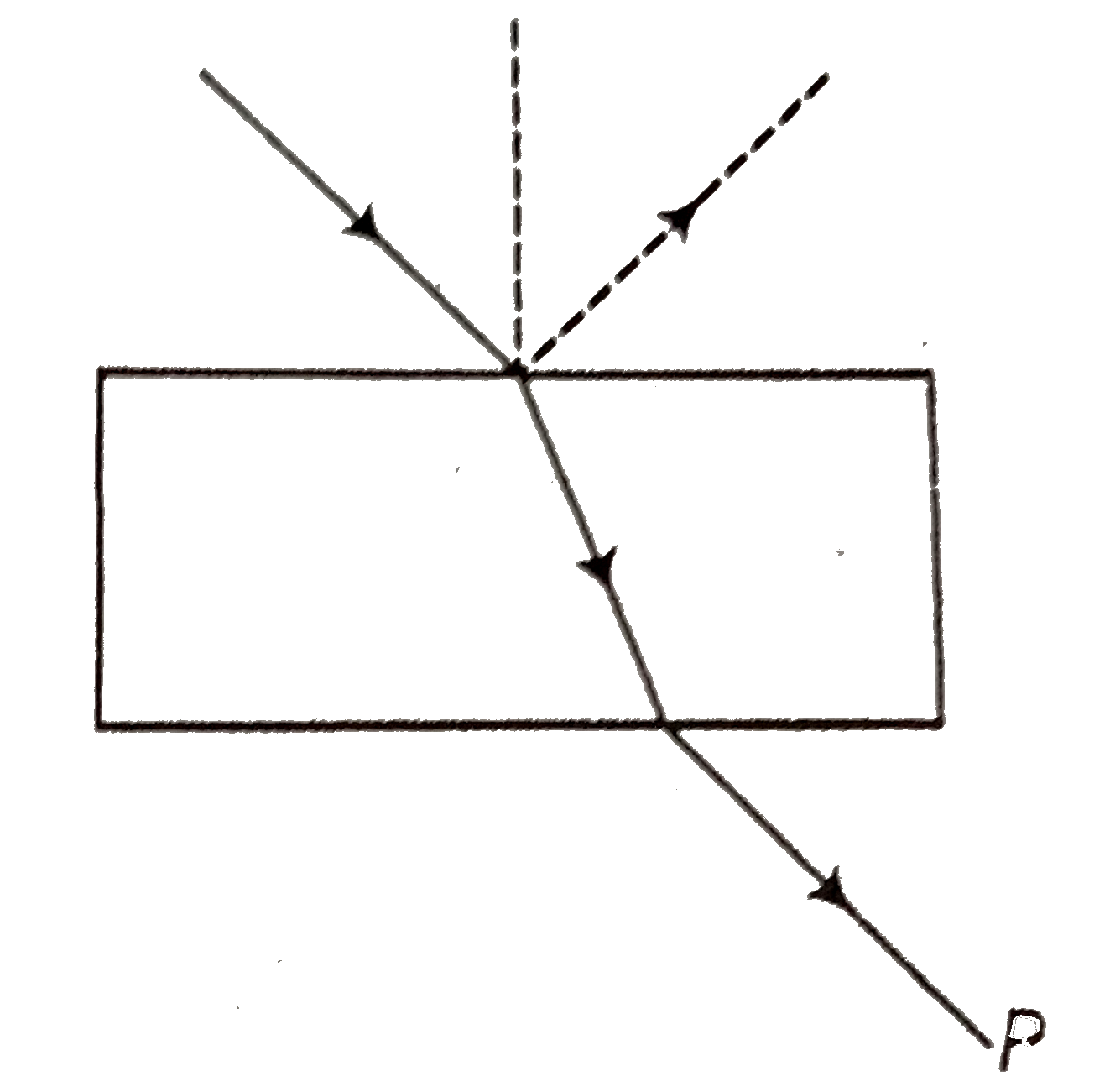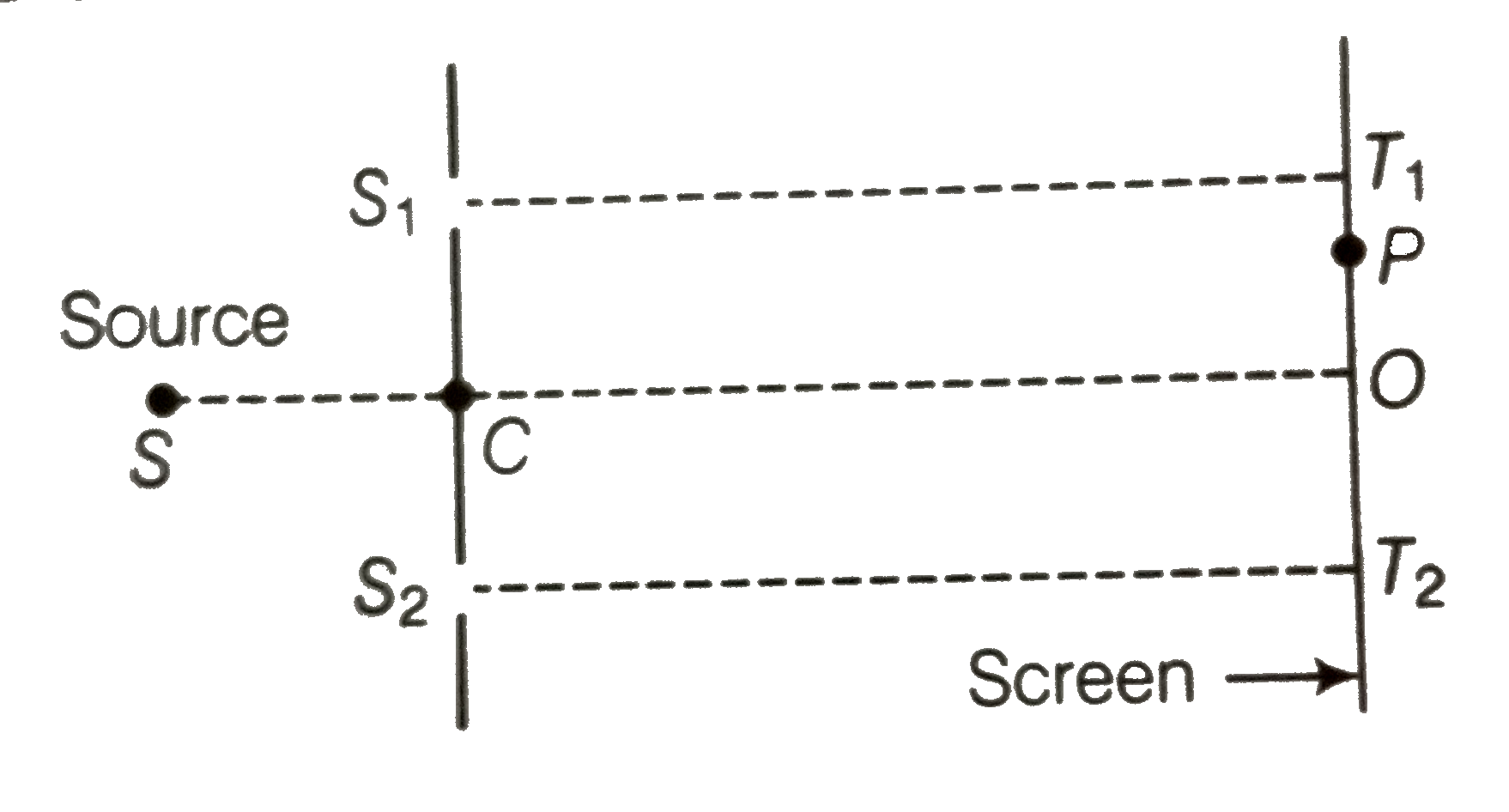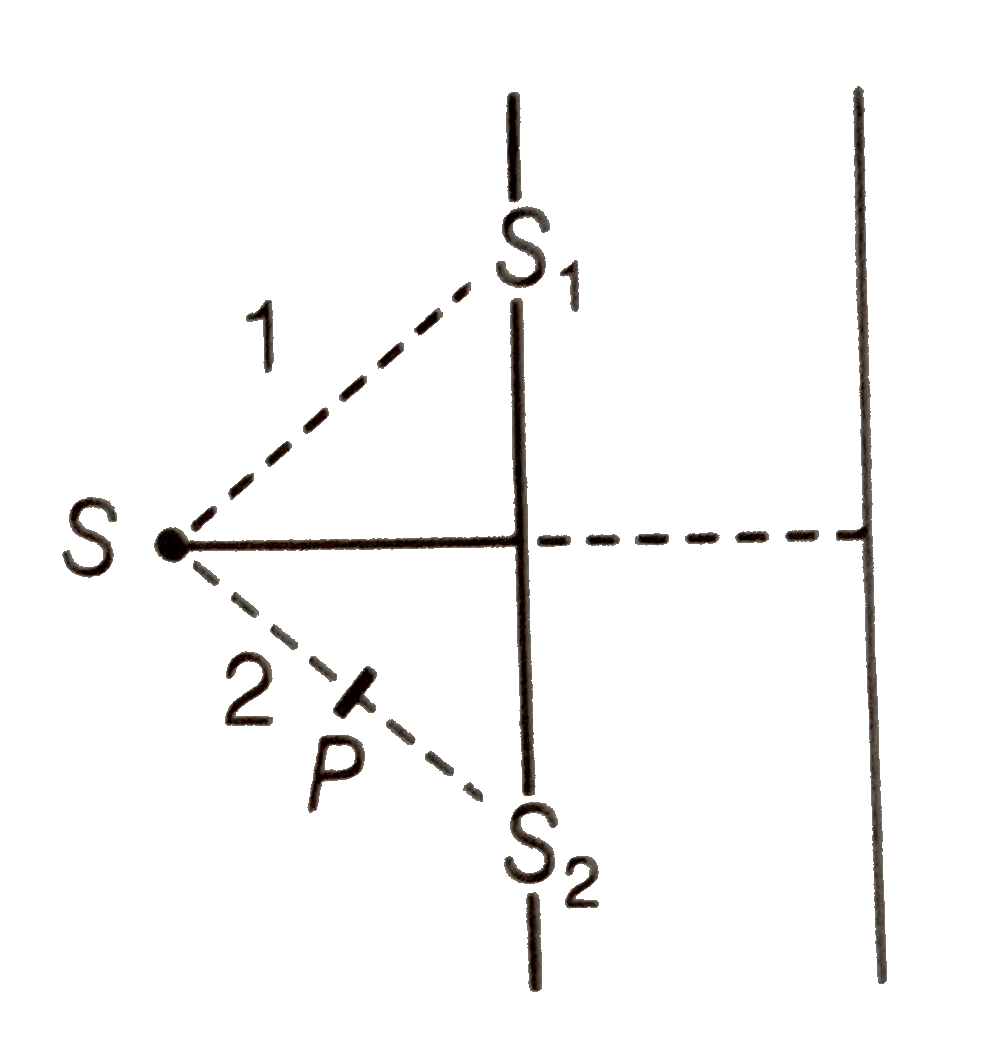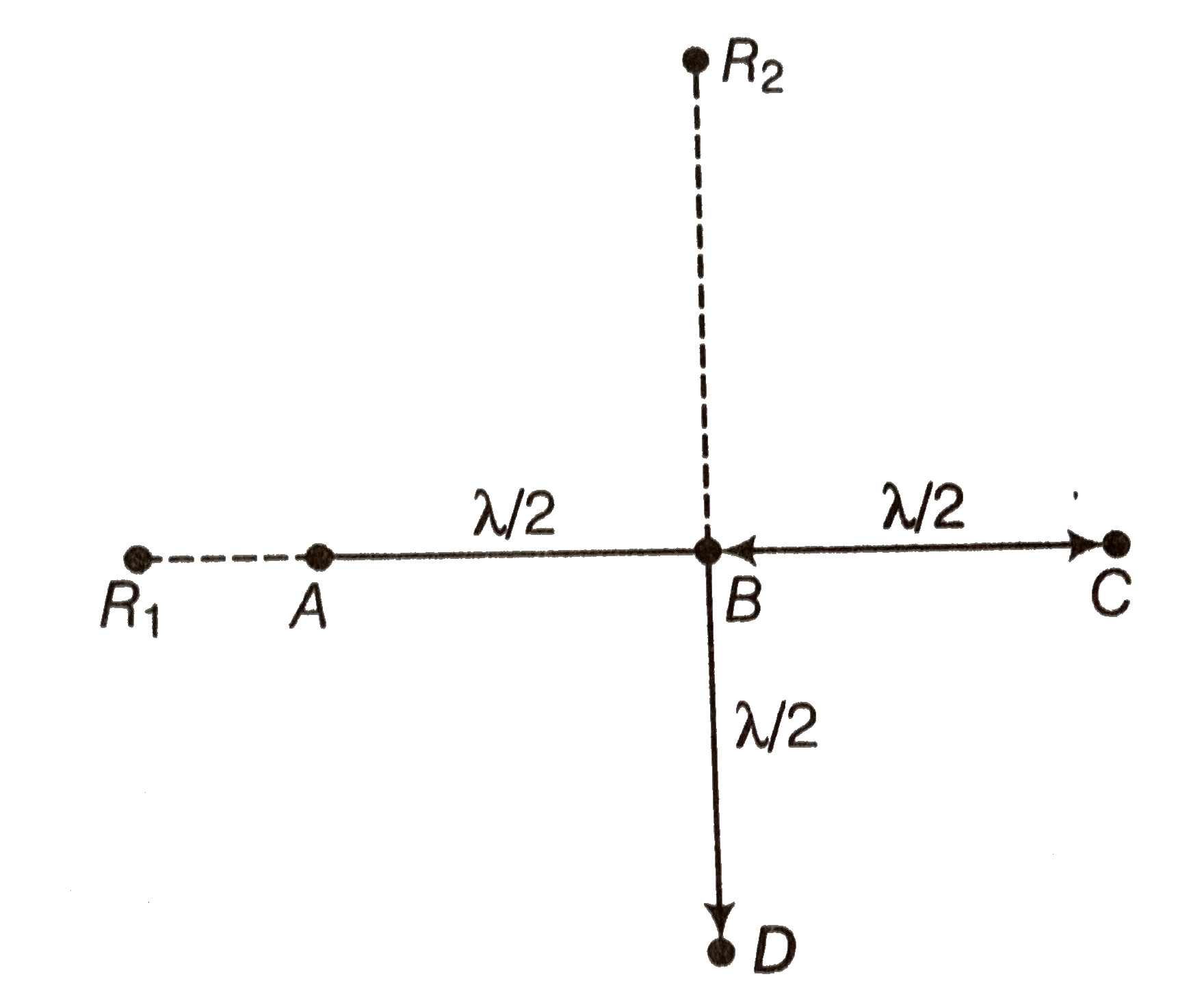Complete Solutions to Wave Optics of chapter WAVE OPTICS of Class 12 book with complete answers and questions
| Class 12 | PHYSICS |
| Chapter | WAVE OPTICS |
| NCERT EXEMPLAR | Wave Optics |
| Number Of Questions | 23 |
| Academic Year | 2023-24 |
Consider a light beam incident from air to a glass slab at Brewster's angle as shown in figure.
A polaroid is placed in the path of the emergent ray at point P and rotated about an axis passing through the centre and pependicular to the plane of the plaroid.

View SolutionConsider sunlight incident on a slit of width `10^(4) Å` . The image seen through the slit shall
View SolutionConsider a ray of light incident from air onto a slab of glass (refractive index n) of width d, at an angle `theta` . The phase difference between the ray reflected by the top surface of the glass and the bottom surface is
View SolutionIn a Young's double slit experiment, the source is white light. One of the holes is covered by a red filter and another by a blue filter. In this case
View SolutionFigure shows a standard two slit arrangement with slits `S_(1), S_(2). P_(1), P_(2)` are the two minima points on either side of P (Figure). At `P_(2)` on the screen, there is a hole and behind `P_(2)` is a second 2-slit arrangement with slits `S_(3), S_(4)` and a second screen behind them.

View SolutionTwo source `S_(1)` and `S_(2)` of intensity `I_(1)` and `I_(2)` are placed in front of a screen [Figure a]. The pattern of intensity distribution see in the central portion is given by Figure b. In this case which of the following statement are true.


View SolutionConsider sunlight incident on a pinhole of width `10^(3)Å`. The image of the pinhole seen on a screen shall be
View SolutionConsider the diffraction pattern for a small pinhole. As the size of the hole is increased
View SolutionFor light diverging from a point source
View SolutionIs Huygen's principle valid for longitudinal sound waves?
View SolutionConsider a point at the focal point of a convex lens. Another convex lens of short focal length is placed on the other side. Then the nature of wavefront emerging from the final image.
View SolutionWhat is the shape of the wavefront on earth for sunlight ?
View SolutionWhy is the diffraction of sound wave more evident in daily experience than that of light wave ?
View SolutionThe human eye has an approximate angular resolution of `phi = 5.8xx10^(-4)` rad and a typical photo printer prints a minimum of 300 dpi (dots per inch, `= 2.54 cm`). Aminimum distance 'z' should a printed page be held so that one doesnot see the indivdual dots is ______ .
View SolutionA polariod (I) is placed infront of a monochromatic source. Another polariod (II) is placed in front of this polaroid (I) and rotated till no light passes. A third polaroid (III) is now placed in between (I) and (II). In this case, wil light emerge from (II) . Explain.
View SolutionCan reflection result in plane polarised light if the light is incident on interface from the side with higher refractive index?
View SolutionFor the same objective, the ratio of least separation between two points to be distiguised by a microscope for light of `5000 Å` and electrons acclerated through 100V used as illuminating substance is __________ (neraly)
View SolutionConsider a two slit interference arrangements (figure) such that the distance of the screen from the slits is half the distance between the slits. Obtain the value of D in terms of `lambda` such that the first minima on the screen falls at a distance D from the centre O.

View SolutionFigure shown a two slit arrangement with a source which emits unpolarised light. P is a polariser with axis whose direction is not given. If `I_0` is the intensity of the principal maxima when no polariser is present, calculte in the present case, the intensity of the principal maxima as well as the first minima.

View Solution
A small transparent slab containing material of `mu=1.5` is placed along `AS_(2)`(figure). What will be the distance from O of the principle maxima and of the first minima on either side of the principal maxima obtained in the absence of the glass slab ?
View SolutionFour identical monochromatic sources A,B,C,D as shown in the (figure) produce waves of the same wavelength `lambda` and are coherent. Two receiver `R_(1)` and `R_(2)` are at great but equal distances from B.
(i) Which of the two receivers picks up the larger signal when B is turned off?
(iii) Which of the two receivers picks up the larger singnal when D is turned off ?
(iv) Which of the two receivers can distinguish which of the sources B or D has been turned off ?

View SolutionThe optical properties of a medium are governed by the relative permittivity `(epsi_(r))` and relative permeability `(mu_(r))`. The refractive index is defined as `sqrt(mu_(r)epsi_(r))=n`. For ordinary material, `epsi_(r) gt 0 ` and `mu_(r) gt 0` and the positive sign is taken for the squre root.
In 1964, a Russian scientist V. Veselago postualted the existance of material with `epsi_(r) lt 0` and `mu_(r) lt 0` . Since, then such metamaterial have been produced in the laboratories and their optical properties studied. For such materials `n= - sqrt(mu_(r) epsi_(r))`. As light enters a medium of such refractive index the phases travel away from the direction of propagation.
(i) According to the description above show that if rays of light enter such a medium from air ( refractive index =1) at an angle theta in 2nd quadrant, then the refracted beam is in the 3rd quadrant.
(ii) Prove that Snell's law holds for such a medium.
View SolutionTo ensure almost `100%` transmittivity, photographic lenses are often coated with a thin layer of dielectric material, like `MgF_(2)(mu=1.38)` . The minimum thickness of the film to be used so that at the centre of visible spectrum `(lambda = 5500 Å)` there is maximum transmission.
View Solution
Wave Optics questions and complete solutions for chapter WAVE OPTICS of NCERT PHYSICS (HINGLISH) of Class 12